Multi-media installation
Produced in partnership with Stratford Amateur Radio Club
Commissioned and produced by Compton Verney, Warwickshire, UK
Bringing together the worlds of amateur radio enthusiasts and birdsong, this installation presented these separate realms of communication as parallel cultures. Coates recognised that in evolutionary terms they both display an extensive range of shared or convergent adaptations.
With the help of the Stratford Amateur Radio Club, Coates set up an operational amateur radio station manned by enthusiasts in the historic house, Compton Verney in Warwickshire. They made ‘contacts’ with other radio operators over as wide an area as possible, after which they followed protocol and exchanged call signs, information about their locations and strength of signal. The operators also used Morse code. The locations of contacts across the world were plotted on a map to assess the range of the station.
A parallel display of information about birdsong, including ornithological texts, birdsong recordings and video footage, directly mirrored the activity and culture of the radio station.
GENDER
AMATEUR RADIO
In the vast majority of countries, the population of amateur radio operators is predominantly male.
A Study of Amateur Radio Gender Demographics, Kenneth E. Harker, 15 March 2005
INFORMATION CONVEYED
AMATEUR RADIO
After the usual greetings it is customary to exchange details of signal strength, name, location and information… After concluding the contact, both stations will listen carefully for callers.
Amateur Radio Operating Manual, Ray Eckersley (ed.), Radio Society of Great Britain, 2000BIRDSONG
These territorial songs carry over long distances and convey detailed information about the location and identity of the singer. Gaps in the song enable the singer to listen for replies, and determine where their rival is and how far off.
CALLING
AMATEUR RADIO
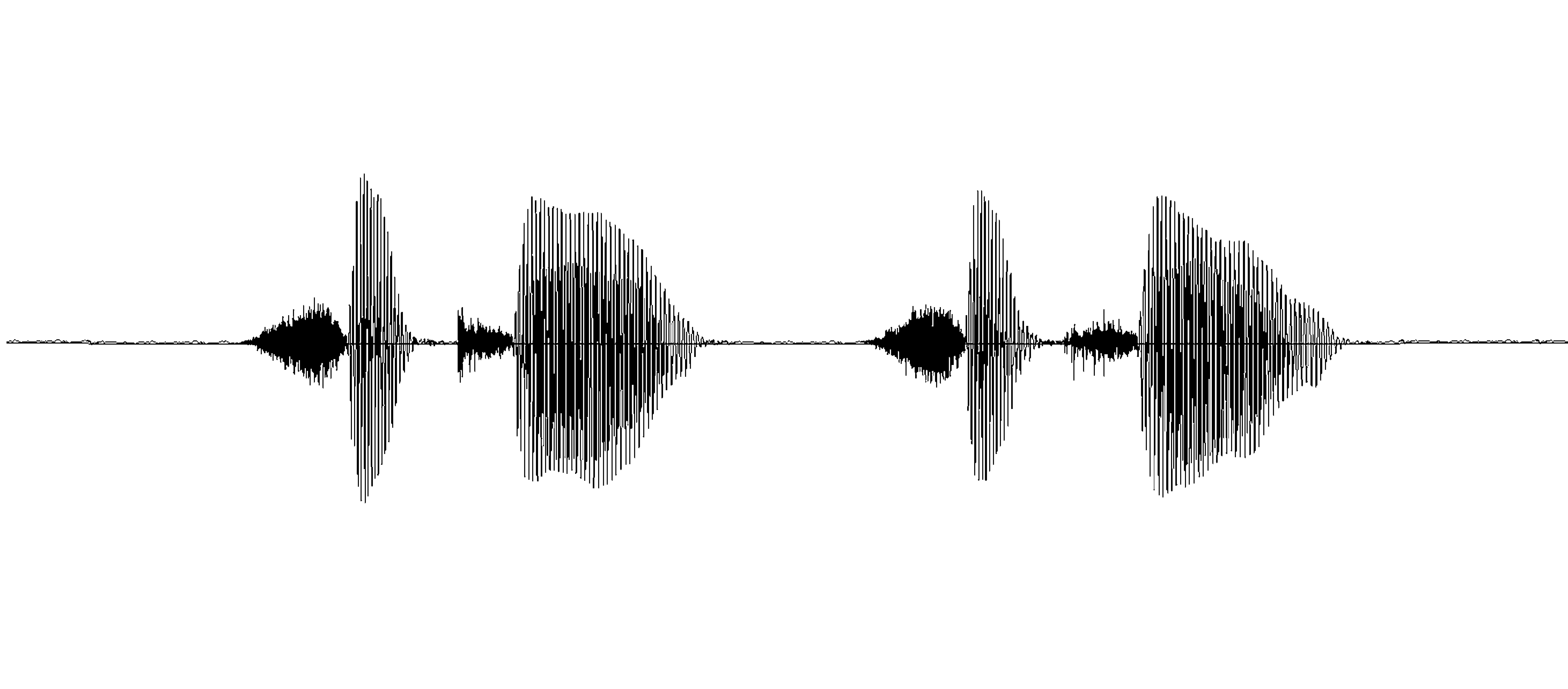
Radio Operator: CQ Call Sign, ‘see-kew see-kew’
There are two accepted ways of establishing contact with another radio station. The first method is to put out a general call or broadcast to all stations, known as a CQ call, and to hope that another station responds.
Amateur Radio Operating Manual, Ray Eckersley (ed.), Radio Society of Great Britain, 2000
BIRDSONG

Song Thrush: part of song, ‘seet-ee seet-ee’
If a sound is to be easily located… one would expect an abrupt onset and offset… This is true of many bird-call notes, such as mobbing calls or contact calls, which function to attract other birds to the caller and so must be easy to locate.
Bird Song, Biological Themes & Variations, C. K. Catchpole and B. J. B. Slater (ed.), Cambridge: Cambridge University Press, 1995
Radio call sign/Songthrush song
EFFICIENCY
AMATEUR RADIO
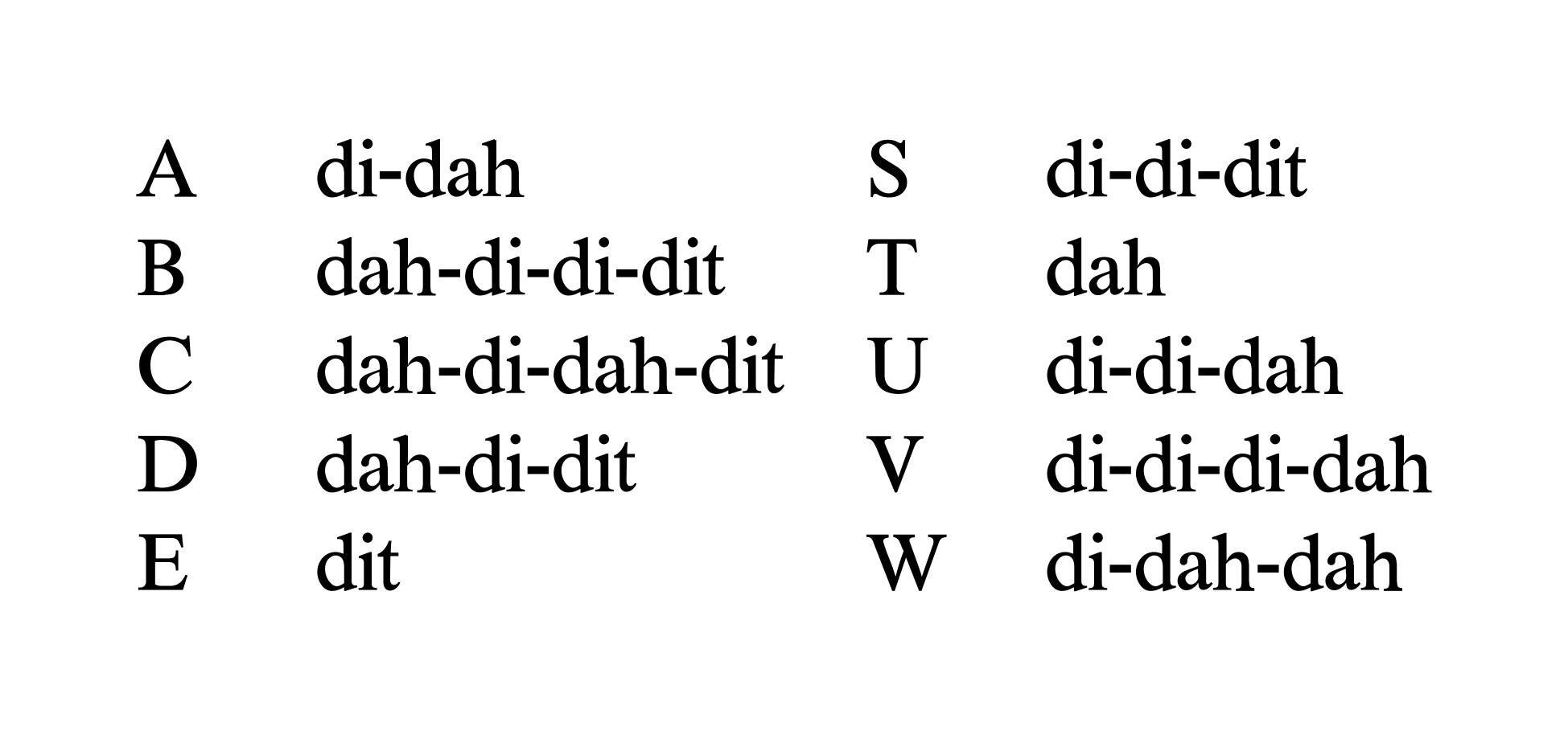
The Morse code and sound equivalents (detail) Amateur Radio Operating Manual, Ray Eckersley (ed.), Radio Society of Great Britain, 200
BIRDSONG
…when an organism the size of a bird must project the voice over several hundred feet in an open environment, the effort involved is likely to be considerable. Such organization as tends to minimize effort must be advantageous, and a song form will be most efficient when the units are so ordered as to balance expenditure of effort and rest. The simplest manifestation of orderly distribution in time is a pulse of given duration, frequency and intensity, energy being expended on the beat and recuperation occurring between beats.
Joan Hall-Craggs, Bird Vocalizations, R. A. Hinde (ed.), Cambridge: Cambridge University Press, 1969Morse code/Skylark song (rec by Karl-Birger Strann)
PHRASING
AMATEUR RADIO
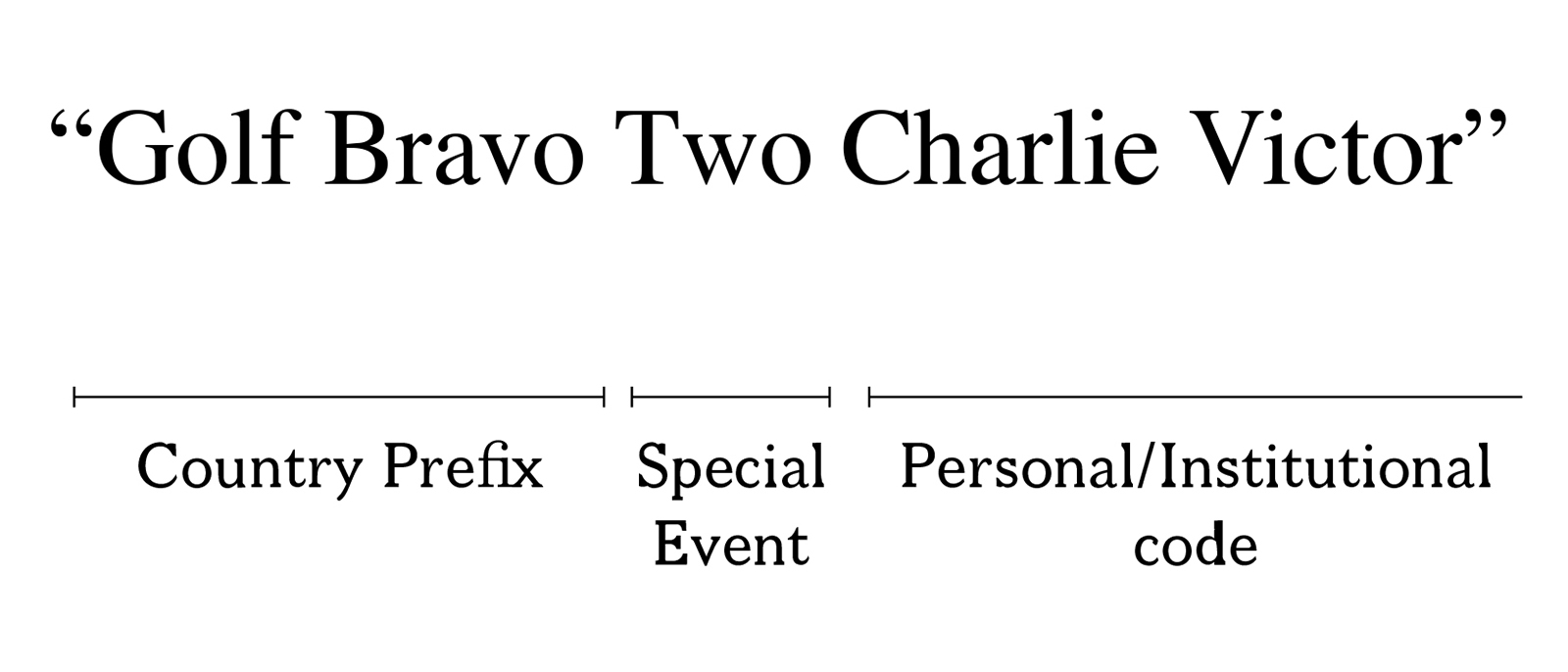
GB2CV Personal Call Sign
It is a requirement of the regulations that all radio amateurs identify themselves by transmitting an identification code, known as the callsign, at short intervals during their transmissions… The initial characters of the callsign denote the country to which the amateur station belongs and is operating from.
Amateur Radio Operating Manual, Ray Eckersley (ed.), Radio Society of Great Britain, 2000
BIRDSONG
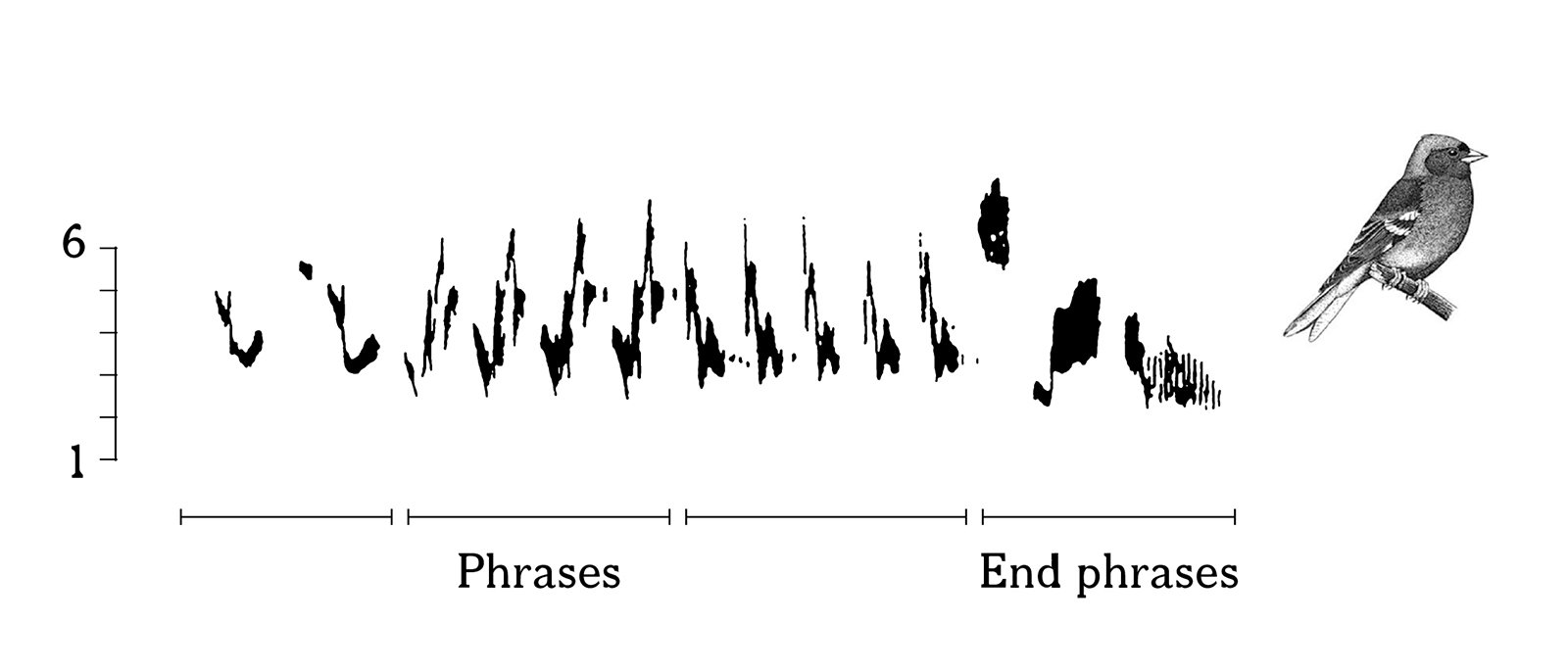
Illustration from Bird Song, Biological Themes & Variations, C. K. Catchpole and B. J. B. Slater (ed.), Cambridge: Cambridge University Press, 1995
The beginning of the song of some species is markedly stereotyped, while the ending is more plastic and shows individual characteristics.
Acoustic Communication in Birds, Vol 1., D.E. Kroom and E.H. Miller (ed.), New York: Academic Press, 1982REPETITION
AMATEUR RADIO
A typical CW (Morse) contact: This is known as a ‘four by two’ CQ call, meaning that ‘CQ’ is sent four times and the call sign twice. A much longer call is not recommended.
“CQ CQ CQ CQ…”
Amateur Radio Operating Manual, Ray Eckersley (ed.), Radio Society of Great Britain, 2000BIRDSONG

Illustration from Songs of Birds, Walter Garstang, illustrated by J. A. Shepherd, Curwen Press, 1922
LEARNING
AMATEUR RADIO
Each set of techniques is appropriate for the particular circumstances, and the only way to become familiar with them is to spend time listening to good operators, noting how and why their methods succeed where those of the poor operators do not. It is quite important that the newcomer should be discriminating in this respect, and not simply mimic whatever he or she has heard previously when going on air for the first time. To put it bluntly – copy the good operators, not the bad.
Amateur Radio Operating Manual, Ray Eckersley (ed.), Radio Society of Great Britain, 2000BIRDSONG
…the young bird hears and memorizes many more songs during his song-learning period than he will keep for his final song repertoire… Therefore, the bird must ‘decide’ which particular songs he will retain for his final repertoire. Nelson and Marler propose that song learning has two phases. In the first phase… song learning is primarily a process of listening to and memorizing the songs of adult birds. In the second phase… the bird ‘selects’ the songs he will retain for his final repertoire.
Assessing the Importance of Social Factors in Bird Song Learning: A Test Using Computer-Simulated Tutors, John M. Burt, Adrian L. O’Loghlen, Christopher N. Templeton, S. Elizabeth Campbell and Michael D. Beecher, Department of Psychology, University of Washington, Seattle, WA, USARANGE
AMATEUR RADIO
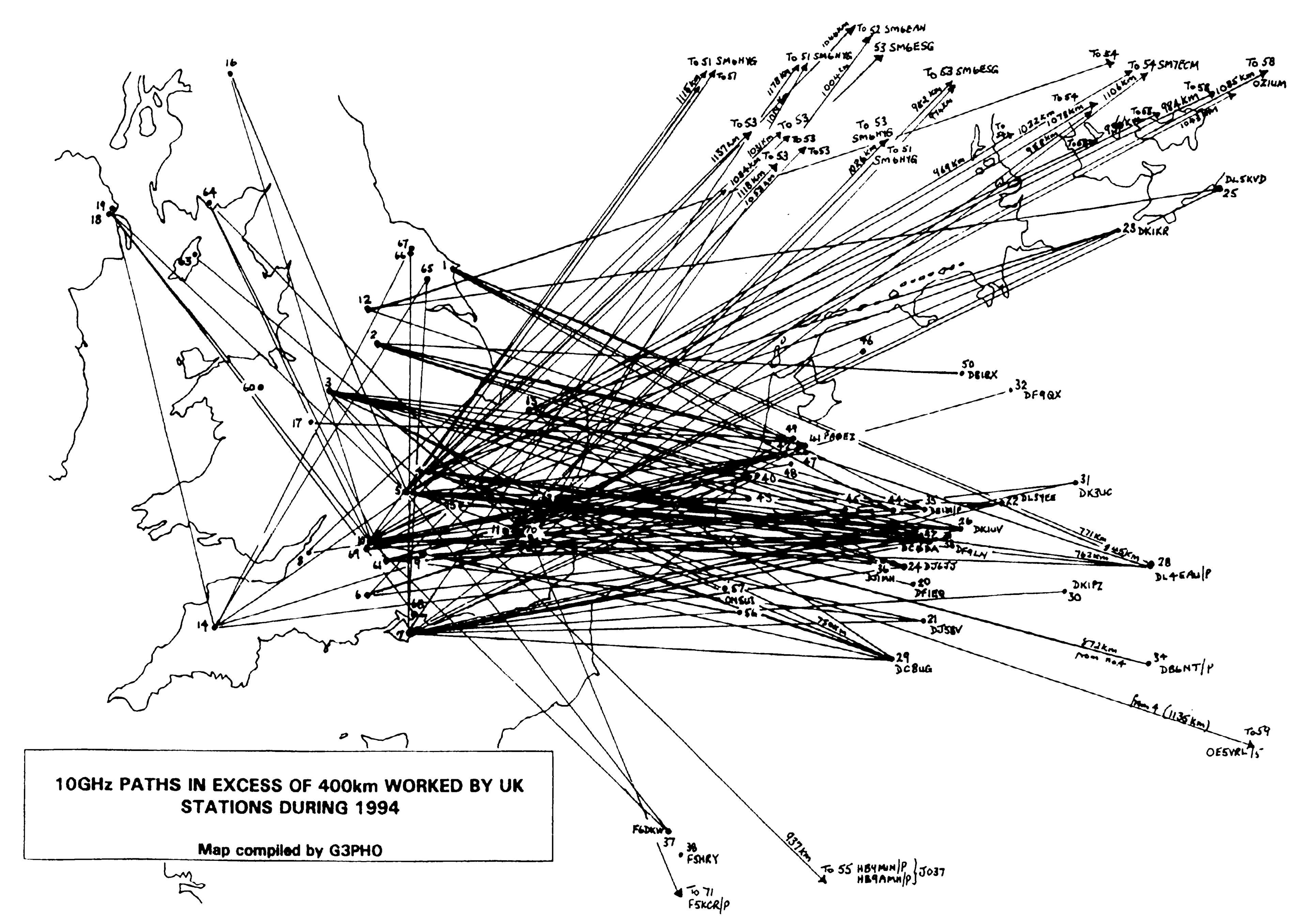
Paths in excess of 400 km worked by UK amateur radio stations during 1994
BIRDSONG

Recoveries of water rails Railus aquatius ringed in Britain and Ireland, 1909 –78
EARTH’S MAGNETIC ACTIVITY
AMATEUR RADIO
Magnetic storms can cause frequency shift and spreading, making signals sound distorted and difficult to copy. Morse signals are transformed into a rough hissing note and sideband voice transmissions vary from a growl to a whisper.
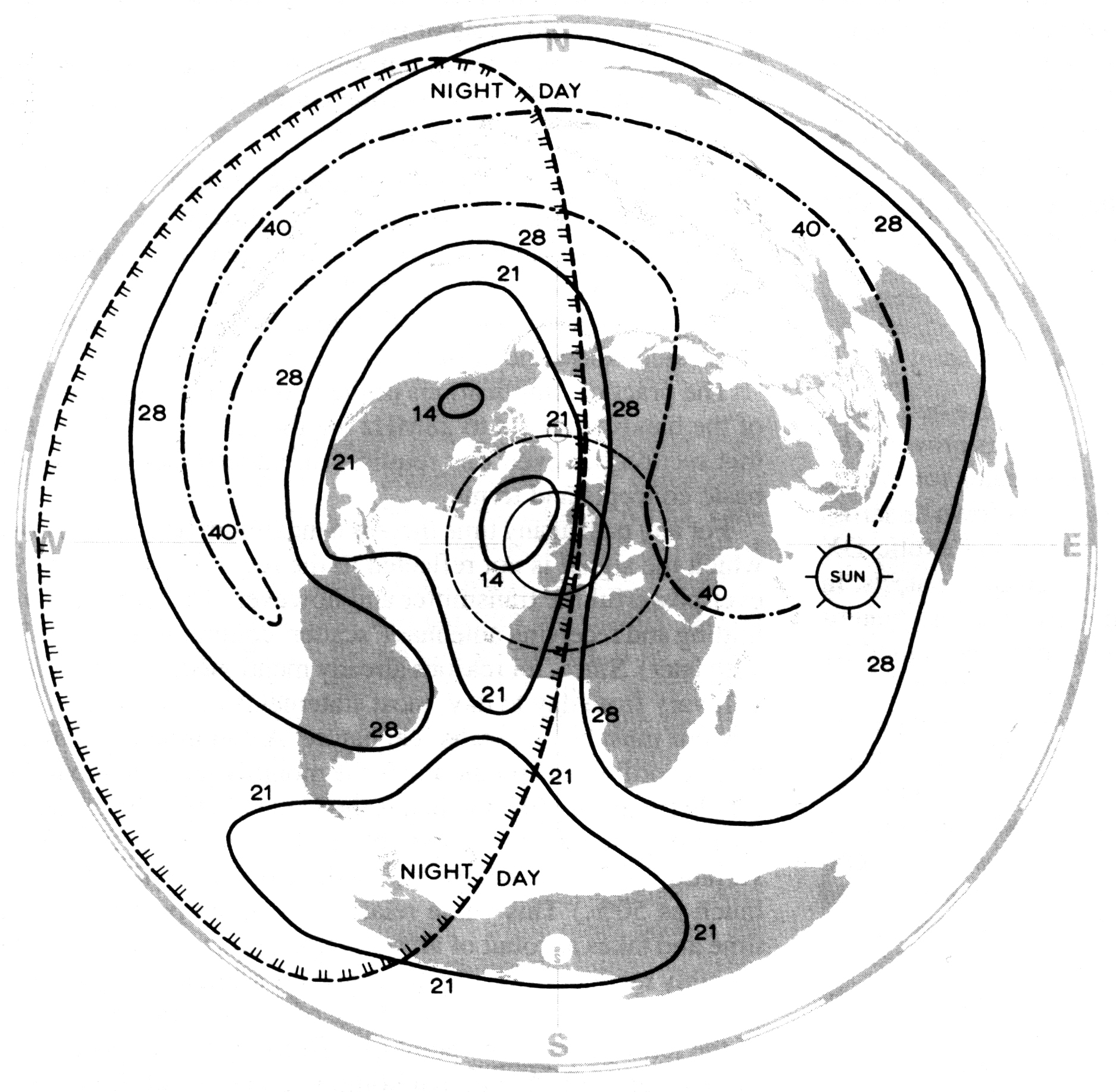
Global distribution of 4,000 km median MUF contours for 14, 21 and 28 MHz, and day / night zones at 0600 GMT in October (sunspot number = 100)
Amateur Radio Operating Manual, Ray Eckersley (ed.), Radio Society of Great Britain, 2000
BIRDSONG
Birds use earth’s magnetic field to guide migration. Changes in magnetic activity can cause the birds to deviate from their migratory routes and become disorientated.
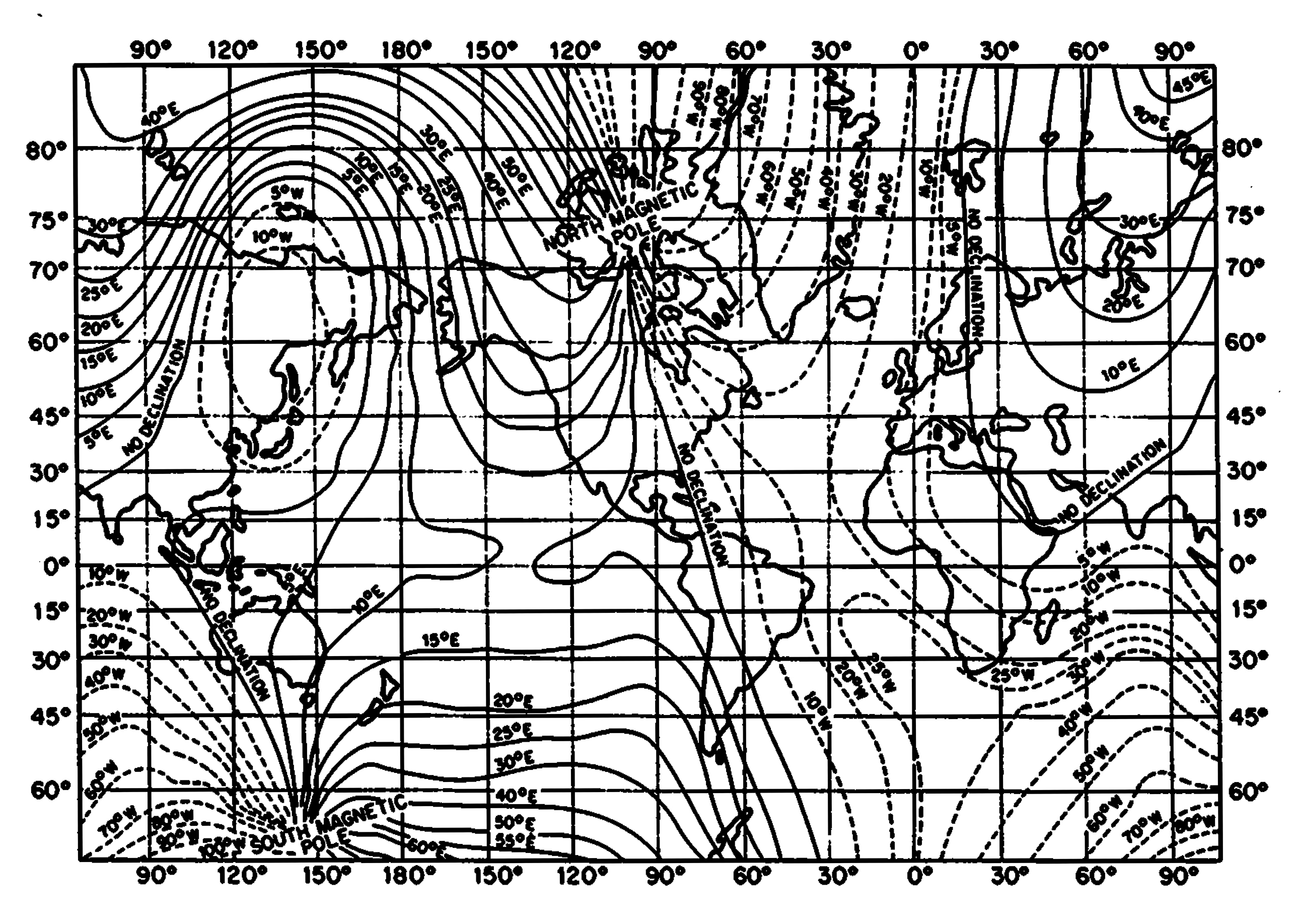
Global variation in the declination of the Earth’s magnetic field
Bird Navigation, R. Robin Baker, London: Hodder & Stoughton, 1984
LUDWIG KOCH
AMATEUR RADIO
Another popular (Morse code) teaching method is the Koch method, developed by the German psychologist Ludwig Koch in the 1930s. The method basically states that you should learn Morse code at the speed you expect to receive.
BIRDSONG
The first known recording of birdsong was made in 1889 by Ludwig Koch, who went on to become an eminent wildlife recordist and BBC natural history presenter.
Archive Pioneers — Ludwig Koch and the Music of Nature. BBC Archives, London: British Broadcasting Corporation, 15 April 2009TERMINOLOGY
AMATEUR RADIO
A change in frequency of Morse code from the desired frequency, due to poor stability in the RF Oscillator is known as chirp.
The Beginner’s Handbook of Amateur Radio, Clay Laster, Indianapolis: Sams, 1979BIRDSONG
Because the (bird) song is a special structure used soley in communication, we call it a signal.
Bird Song, Biological Themes & Variations, C. K. Catchpole and B. J. B. Slater (ed.), Cambridge: Cambridge University Press, 1995SOCIETIES
AMATEUR RADIO
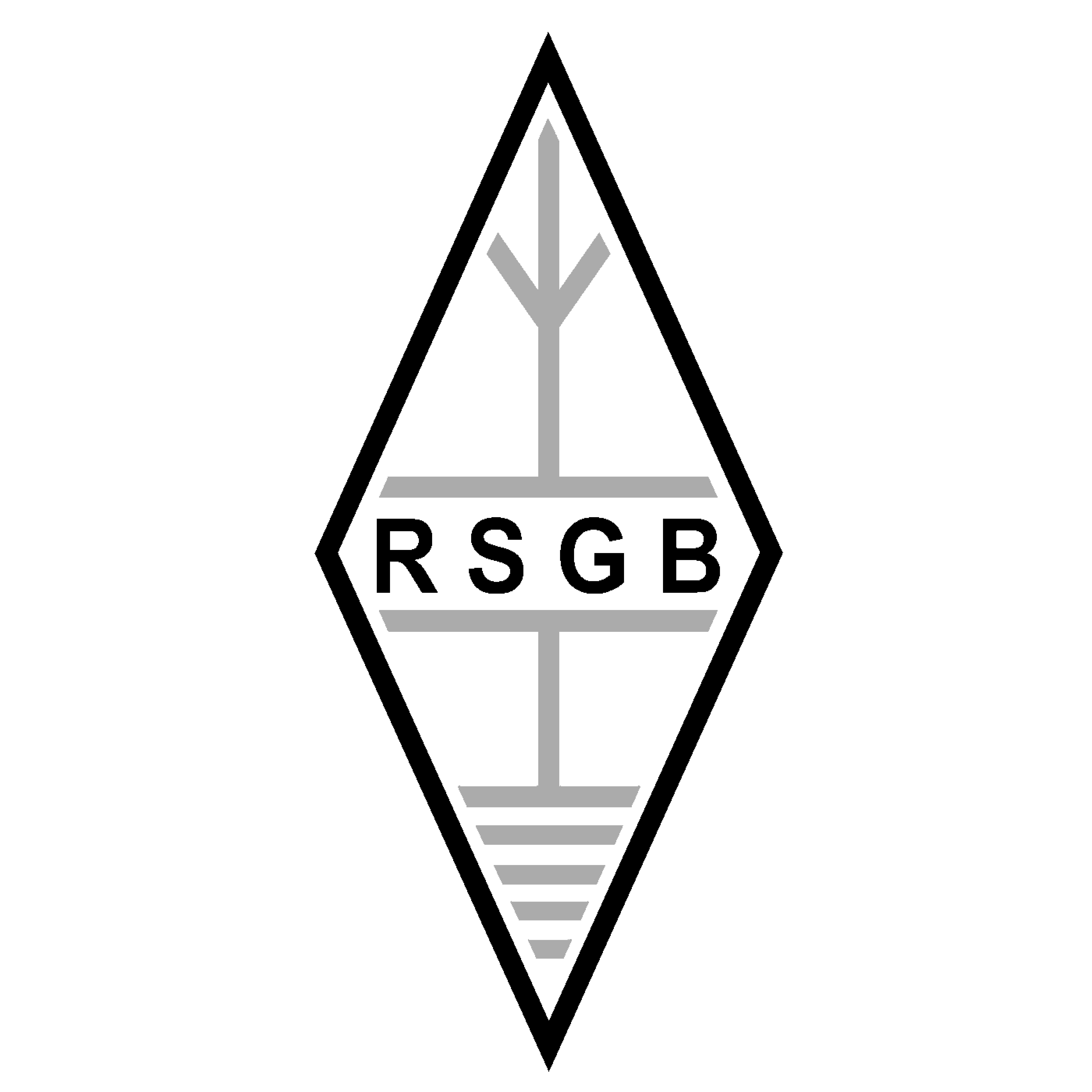
Radio Society of Great Britain
BIRDSONG

Royal Society for the Protection of Birds
HEIGHT
AMATEUR RADIO
Siting the Antenna:
For maximum efficiency the antenna should be sited as high as possible.
Amateur Radio Operating Manual, Ray Eckersley (ed.), Radio Society of Great Britain, 2000
BIRDSONG
It is comparatively unusual for birds to sing close to the ground… So important are song perches to corn buntings, that they have been observed invariably to choose the higher of two singing perches, even if the next highest is only a few centimetres lower…
Bird Song: Biological Themes and Variations, C.K. Catchpole and P.J.B. Slater, (ed.), Cambridge: Cambridge University Press, 1995You are reading Chiffchaff (Amateur Radio Enthusiasts and Birds)
